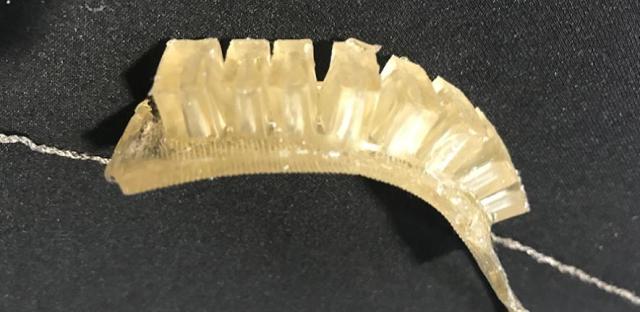Experts from the University of Cambridge (UK) told about the creation of a material that can be ideally suited for the development of artificial leather and robotic arms.
The study was published in the journal NPG Asia Materials .
Researchers have developed self-healing, biodegradable, 3D-printed materials that could be useful in soft robotics. Scientists see the prospects of jelly-like materials in the creation of artificial skin and robotic limbs.
"The inclusion of soft sensors in robotics allows us to get much more information from them, for example, how muscle tension allows the brain to receive information about the state of our bodies," said the author of the article, David Hardman. New materials with the help of sensors are able to detect damage and begin rapid regeneration. The process takes place without the intervention of specialists and at room temperature. Early versions of the material had to be heated to start the self-healing process.
Specialists achieved the desired result when they abandoned carbon ink in favor of sensors containing sodium chloride. Since the salt is soluble in a water-filled hydrogel, it provides a uniform channel for ionic conductivity. The addition of salt also increased the elasticity of the material by three times.
Self-healing materials are very cheap, as they can be easily manufactured using 3D printing technology. New hydrogel-based materials can be used to create artificial skin and robotic limbs.

